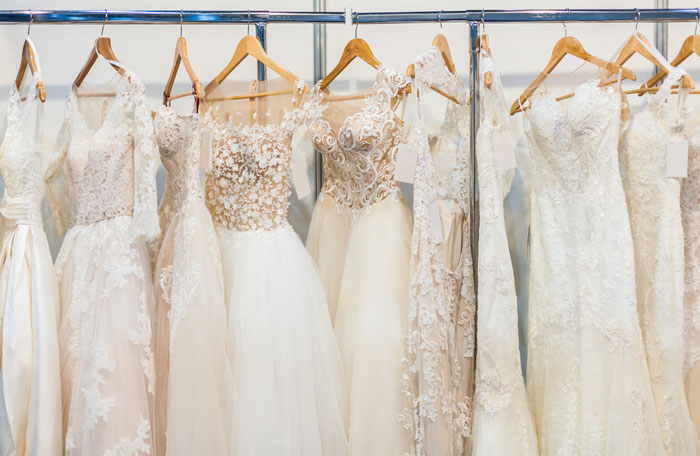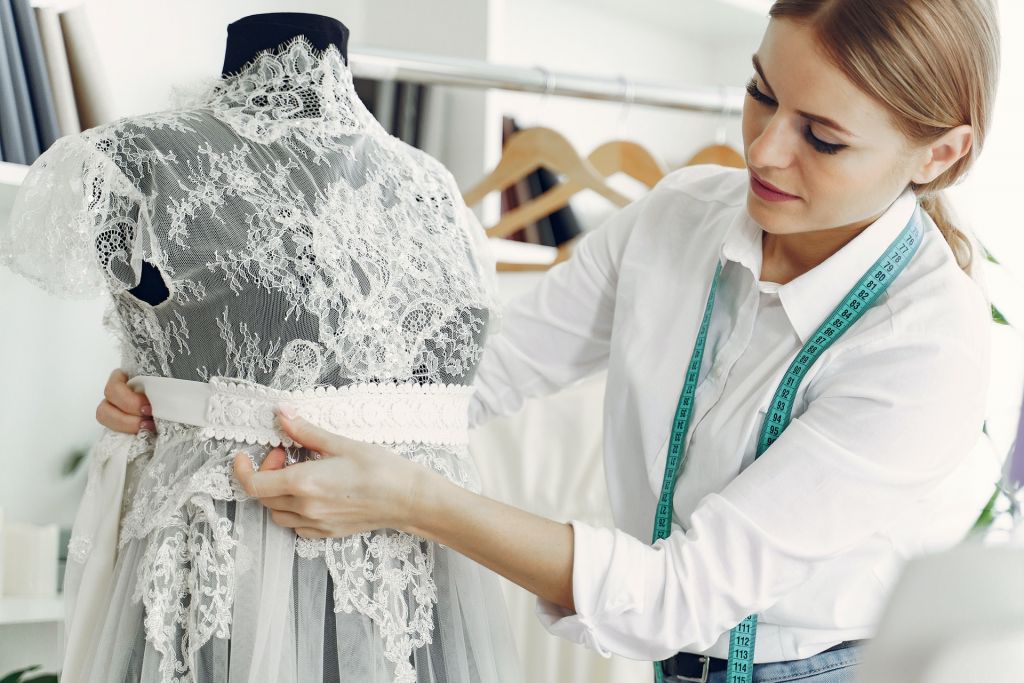Our Opinion
Voluminous tulle. Sheer chiffon. Sultry silk. And glistening satin. There are just so many fabrics out there that can create the perfect wedding gown. But, which one is the best? That’s a hard question to answer because it just depends on what you mean.
Which one is the best in terms of price point? Well, if you’re looking to budget, polyester is the most inexpensive to work with while silk can reach the highest price points.
Which one is the most durable? That’s an easy one as it’s also the quintessential wedding fabric: satin! It’s the most versatile in terms of design, comes in various shades, and fits all bodies. It can be ruched, layered, or cover a ball gown. But it can also be sleek and modern with a shining finish.
Which one cleans the best? This also goes to polyester and also to rayon. They can withstand both machine and hand washing with little to no issues.
Which one is the most popular? Lace. Lace is super trendy right now and comes in a variety of designs. There’s Venitian which is incredibly delicate and light. There’s Chantilly, one of the most popular of laces, that features beautiful floral patterns. There’s even French lace which is a bit more durable due to its net backing.
Other Expert Answers
Who What Wear Explains 5 Popular Materials
“Below find the five most popular wedding dress materials and what type of wedding might lead you to seek out such a style.
Silk Faille: For a city wedding, you might consider heavy silk. From the material, you are able to create some of the most classic shapes with little fuss, but the weight of the material will allow you to opt for silhouettes that are more dramatic than the rest.
Flowy Chiffon: When you’re seeking out that ethereal look, consider a silk chiffon. It’s more forgiving than a classic lightweight silk weave and more breathable for layering purposes as well. If you’re looking for that gown that moves with the wind but doesn’t reveal every dip and curve of your body, go for chiffon.
Heavy Lace: If you want a simple silhouette that will make a bold statement, consider crafting your wedding dress out of a heavy embroidered lace. The fabric is a head-turner all on its own, so you could choose anything from a simple tank maxi to a full-blown princess moment and you’re sure to have a gown that wows.
Woven Cotton: Perhaps best fit for a beachside wedding, lightweight woven cotton is a great option that requires little fuss. For a bohemian look, we particularly love slightly embellished styles, by way of embroidery, eyelet, or lace insets.
Tulle: For the whimsy in you, go for a silhouette made of tulle. You can opt for a more form fitting shape that boasts a gathered and ruched texture made of the elegant mesh or a more full-skirted ballgown shape that stuns in a true princess moment.”
Kleinfeld Explains Fabric Selection
“Fabric is one of the most important aspects of your wedding dress. It affects the texture, drape and movement of each and every dress (and how it’ll appear in photographs) When describing your dream dress to your consultant, it’ll help to have a basic knowledge of a few of the top bridal fabrics. After silhouette, a wedding dress is best described in the fabric you’re envisioning! Here are a few of the top fabrics used to construct dresses found at Kleinfeld:
Silk: Fiber made from silkworm cocoons. Silk fabric comes in many different varieties including shantung duchesse, zymboline and mikado.
Satin: A heavy, tightly woven fabric that’s glossy on the front and dull on the back.
Organza: A sheer fabric more flowy than tulle, but stiffer than chiffon. A favorite choice for multilayered skirts.
Taffeta: A light, crisp, lustrous fabric with a paper feel.
Pro-Tip: Organza and Taffeta are light weight fabrics perfect for summer weddings!
Tulle: A netting made of silk, nylon, or rayon. Tulle can be soft (as seen on veils or poofed ballerina skirts) or stiff (used in layers under skirts to give them body and volume).
Charmeuse: A lightweight, semi-lustrous fabric with a soft texture.
Chiffon: A delicate, semi transparent fabric with a soft finish. Most often seen layered on skirts or veiled.
Linen: A fabric woven from flax. It’s cooler than cotton but tends to wrinkle easily.
Pro-Tip: Linen wrinkles very easily. So you may want to be sure you take all your wedding portraits earlier in the day or prepare to retouch your photos!
Brocade: A heavy, intricate woven fabric with 3-D designs.
Damask: Similar to brocade with designs expressed in texture.
Illusion: Although not made of one specific fabric, this fine translucent netting is usually seen on neck panels, back panels or sheer sleeves.
Pro-Tip: Illusion netting is very delicate. Be careful not to wear jewelry that may snag it on your wedding day.
Lace: A delicate and classic open fabric made by looping, twisting, or knitting thread in patterns. There are many different types of lace from Alencon to Chantilly to Venice.”



